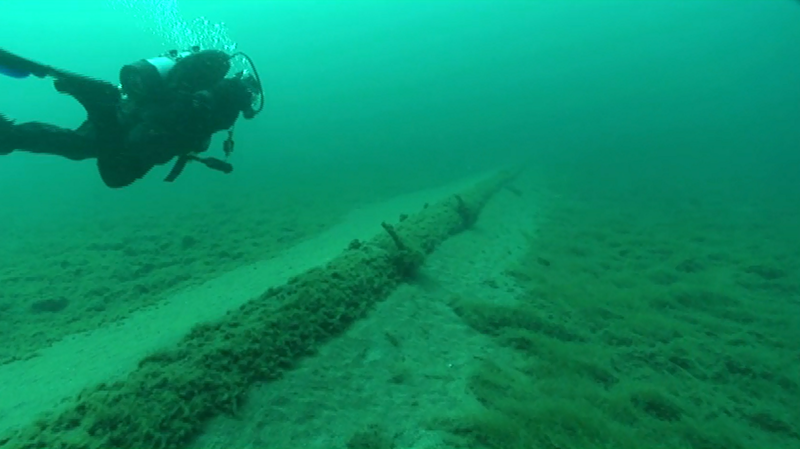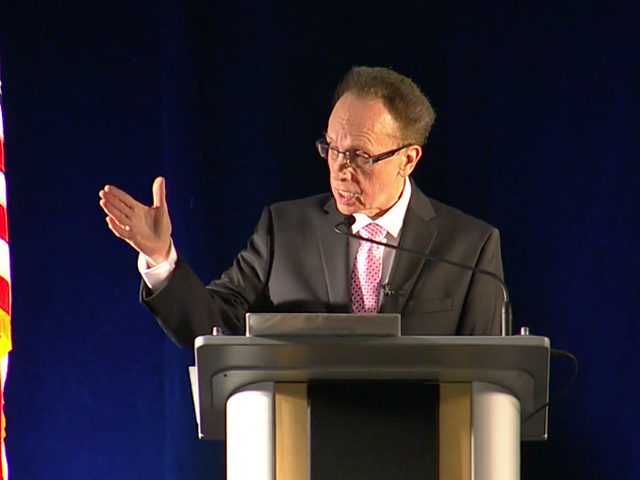
National Wildlife Federation
In 2013, the National Wildlife Federation sent divers to look at Enbridge, Inc.'s aging straits pipelines, finding wide spans of unsupported structures encrusted with exotic zebra mussels and quagga mussels.
Some experts are cautioning the proposed Line 5 tunnel project in the Straits of Mackinac is not ready for prime time. The state is holding hearings on Enbridge's permit applications for the project.
Geological engineer Brian O'Mara joined other scientists who reviewed the plan to share their concerns during a press conference Monday. The project involves tunneling beneath open water, where, O'Mara explained, there are challenging geological conditions such as poor rock quality, solution cavities and fault zones.
"They're going to hit some difficult drilling conditions," O'Mara said. "Now, I don't think it's impossible but they're going to have to plan for it. And since the amount of study that they did was so minimal, it's a recipe for disaster, because they're not going to be ready for the unknown."
O'Mara said the risk assessment done for the project is inadequate, and contends the permit proposal falls short of industry standards. An Enbridge spokesman told reporters experienced geologists and engineers consulted on the tunnel plan, and the company is confident in its geological analysis.
Mike Wilczynski was a senior geologist for 12 years with the agency overseeing the permit process, now called the Michigan Department of Environment, Great Lakes and Energy. He said he questions the type of slurry planned for tunnel excavation. It includes bentonite clay, a mineral that can stay suspended in water almost forever and sticks to everything it touches.
"If it's in a wetland, it's going to coat the vegetation. If it's in the lake, it'll coat the bottom, it'll kill the organisms that live in the lake bottom. It coats fish gills where they can't breathe. And it's hard to recover," Wilczynski said. "They haven't even discussed what would happen if they had an accidental release. How are they going to recover the bentonite slurry?"
O'Mara said he's hopeful their concerns will be heard and result in additional assessments. He's worked on dozens of tunnels and said the project should be completed the right way the first time to avoid disaster.
"The problems really could be catastrophic. There could be explosions, cave-ins, flooding, basically the workers could be killed, there could be environmental damage that's incalculable," O'Mara said.
Wilczynski noted the tunnel is one of the biggest proposed Great Lakes environmental projects state regulators have overseen in Michigan's history.
"I don't believe they have the geological or geological-engineering tunneling experience in house to properly review these permits and to oversee the construction," Wilczynski said.
A spokesman for EGLE said the findings will be considered along with other public comments, and noted the state has hired tunneling experts to consult on the proposal.





